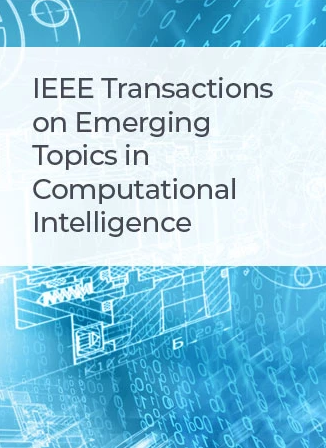用于快速磁共振成像扫描的强化学习和变压器
IF 5.3
3区 计算机科学
Q1 COMPUTER SCIENCE, ARTIFICIAL INTELLIGENCE
IEEE Transactions on Emerging Topics in Computational Intelligence
Pub Date : 2024-03-18
DOI:10.1109/TETCI.2024.3358180
引用次数: 0
摘要
磁共振成像(MRI)的一个主要缺点是使用相位编码获取完整的 K 空间矩阵所需的扫描时间较长。本文提出了一种基于变压器的深度强化学习(RL)框架(称为 TITLE),通过实时依次选择部分相位来缩短扫描时间,这样就能从由此产生的特定切片的不完整 K 空间矩阵中准确地重建切片。作为一种基于深度学习的切片特定方法,TITLE 方法具有以下特点和优点:(1)它具有实时性,因为从获得回波信号到激活下一个 180° 射频脉冲之间的时间段内就能决定下一次要编码的相位。(2) 利用基于自我注意的神经网络变压器强大的特征表示能力,通过深度强化学习机制预测相位。(3) 变压器利用历史选定的相位(称为相位指示向量)和相应的扫描切片欠采样图像来提取特征。在 fastMRI 数据集上的实验结果表明,所提出的方法比最先进的基于强化学习的方法快 150 倍,并且在重建精度上优于最先进的基于深度学习的方法。源代码已发布。本文章由计算机程序翻译,如有差异,请以英文原文为准。
Reinforcement Learning and Transformer for Fast Magnetic Resonance Imaging Scan
A major drawback in Magnetic Resonance Imaging (MRI) is the long scan times necessary to acquire complete K-space matrices using phase encoding. This paper proposes a transformer-based deep Reinforcement Learning (RL) framework (called TITLE) to reduce the scan time by sequentially selecting partial phases in real-time so that a slice can be accurately reconstructed from the resultant slice-specific incomplete K-space matrix. As a deep learning based slice-specific method, the TITLE method has the following characteristic and merits: (1) It is real-time because the decision of which phase to be encoded in next time can be made within the period between the time at which an echo signal is obtained and the time at which the next 180° RF pulse is activated. (2) It exploits the powerful feature representation ability of transformer, a self-attention based neural network, for predicting phases with the mechanism of deep reinforcement learning. (3) Both historically selected phases (called phase-indicator vector) and the corresponding undersampled image of the slice being scanned are used for extracting features by transformer. Experimental results on the fastMRI dataset demonstrate that the proposed method is 150 times faster than the state-of-the-art reinforcement learning based method and outperforms the state-of-the-art deep learning based methods in reconstruction accuracy. The source codes are available.
求助全文
通过发布文献求助,成功后即可免费获取论文全文。
去求助
来源期刊

IEEE Transactions on Emerging Topics in Computational Intelligence
Mathematics-Control and Optimization
CiteScore
10.30
自引率
7.50%
发文量
147
期刊介绍:
The IEEE Transactions on Emerging Topics in Computational Intelligence (TETCI) publishes original articles on emerging aspects of computational intelligence, including theory, applications, and surveys.
TETCI is an electronics only publication. TETCI publishes six issues per year.
Authors are encouraged to submit manuscripts in any emerging topic in computational intelligence, especially nature-inspired computing topics not covered by other IEEE Computational Intelligence Society journals. A few such illustrative examples are glial cell networks, computational neuroscience, Brain Computer Interface, ambient intelligence, non-fuzzy computing with words, artificial life, cultural learning, artificial endocrine networks, social reasoning, artificial hormone networks, computational intelligence for the IoT and Smart-X technologies.
 求助内容:
求助内容: 应助结果提醒方式:
应助结果提醒方式:


